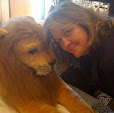
I finished up The Invisible Woman: The Story of Nelly Ternan and Charles Dickens, by Claire Tomalin, and am happy to say that it only got better and better. This is one of the best books I've read in a long time.
I loved Tomalin's ability to weave in lit crit with biographical elements with historical perspective and felt an immense amount of satisfaction in seeing a portrait of Dickens emerge that was somewhat different, and more sympathetic, than I had had before. I last read about Dickens about 10 years ago when I read Peter Ackroyd's bio and felt so angry with the man for his treatment of his wife Catherine that I found his novels unreadable afterwards. While Tomalin certainly doesn't sugar-coat Dickens' character, she does show him as a much more conflicted author/artist/man, and I felt much more sympathy for him as I got to know Nelly than I did before.
Here's some of the interesting things I marked as I read...
While we think of Dickens as the epitome of the Victorian age, he "was formed by the Regency and kept some of its traits; he always favored colored plumage over the black frock-coated aspect of true Victorian man. And although the long curls of his youth were coarsening and thinning, a mustache and beard now covered his lip and chin, there was nothing patriarchal about these, rather a hint of the raffish and piratical...He held himself as straight as a soldier and moved with a dancer's agility; his step was quick, light and precise." p. 78 Chapter 6, "The Amateur: Dickens in 1857"
Tomalin discusses at length the irony (or perhaps hypocrisy) of Dickens, the champion of the Fallen Woman (in both his stories as well as the work he did with Angela Coutts to rehabilitate young unmarried girls who became pregnant), who establishes as his mistress a young, dependent girl, casting himself in the role of the villain who corrupts innocence. While he did not abandon Nelly as Steerforth abandons Little Em'ly in David Copperfield, the life she lived as his mistress was definitely shadowy, on the margins, locked away from respectability.
Dickens lived a frantic double life so that his public and even some of his friends didn't know what she was to him. Tomalin also suggests that Dickens's struggles with his guilt manifests itself in his later works, especially Great Expectations and A Tale of Two Cities. In the latter, Tomalin makes the case that Nelly was the physical model for Lucie Manette:
As his eyes rested on a short, slight, pretty figure, a quantity of golden hair, a pair of blue eyes that met his own with an inquiring look, and a forehead with a singular capacity (remembering how young and smooth it was), of rifting and knitting itself into an expression that was not quite one of perplexity, or wonder, or alarm, or merely of a bright fixed attention, though it included all the four expressions...
After Dickens died, Nelly created an entirely new life for herself--she lopped ten years off of her age, found herself a handsome husband, had two children, and for awhile prospered. She and her husband fell on hard times, but there is no evidence that he ever knew about her former life, and her children did not find out that their mother was more to Charles Dickens than a god-daughter until after she had died.
I enjoyed the research and thoughtful analysis that Tomalin put into this work--it has gone a long way to rehabilitating Dickens in my eyes. I still think he treated Catherine in a shabby way, but he did his best to protect and support Nelly in her gilded cage. He wasn't able to set her free until he died, but I got the feeling in reading this book that he was fully aware of the price that he had to pay to pursue his passion for her. It's a sad story, probably sadder than any he ever wrote.

Extremely interesting second posting, Jane!
ReplyDeleteEspecially the connections between this hidden relationship and Dickens's works.
Sounds like a fascinating biography. Thanks for posting about this. I am going to check this one out.
ReplyDelete-Jay
I will definitely get to this at some point. It's a unique story!
ReplyDeleteThe mailbox photo is adorable. The biography sounds excellent. Have a great LONG w/end.
ReplyDeleteWow, this sounds like a must-read for me. I always enjoy how well-researched both Tomalin and Ackroyd's books are. They always pick such fascinating subjets. Thanks for sharing with us!
ReplyDeleteI just finished this one too. (Still need to write about it.) I love Tomalin as a biographer and really want to read her latest on Dickens -- soon.
ReplyDelete